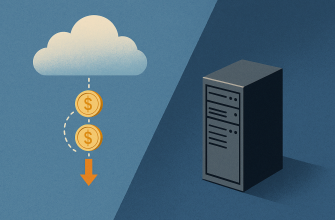- The Rise of L7 DDoS Attacks: Why Your Web App Might Be the Next Target
- What Is an L7 DDoS Attack?
- Key Differences Between L3/L4 and L7 Attacks:
- Why L7 Attacks Are on the Rise
- 1. Web Applications Are Now the Front Line
- 2. Attackers Are Getting Smarter
- 3. Mitigation Is More Expensive
- 4. They Bypass Traditional Firewalls
- Common Types of L7 DDoS Attacks
- Real-World Impacts
- How to Defend Against L7 DDoS
- 1. Use a Behavioral WAF
- 2. Rate Limiting and Throttling
- 3. Bot Management Tools
- 4. Offload Content to CDNs
- 5. Scalable Infrastructure
- 6. DNS-Level Filtering
- 7. Monitoring and Alerting
- Future Trends to Watch
- Final Thoughts
The Rise of L7 DDoS Attacks: Why Your Web App Might Be the Next Target
As cybersecurity threats evolve, one category has quietly become one of the most dangerous for modern web infrastructure: Layer 7 DDoS attacks. Unlike traditional floods that focus on network or transport layers, L7 attacks target your application layer — the very logic that powers your website, app, or API.
In this article, we’ll explore what makes L7 DDoS so insidious, how attackers operate, and — most importantly — how to defend your digital assets in 2025.
What Is an L7 DDoS Attack?
In the OSI model, Layer 7 refers to the application layer — where HTTP, HTTPS, DNS queries, and other protocols operate. A Layer 7 DDoS attack specifically aims to exhaust the resources of an application server by overwhelming it with seemingly legitimate requests.
Rather than flooding bandwidth with massive packet volume (like in L3/L4 attacks), attackers focus on business logic abuse, API calls, login attempts, or slow HTTP connections that are hard to distinguish from real traffic.
Key Differences Between L3/L4 and L7 Attacks:
- Target: Network vs. Application logic
- Detection: Easy (volume) vs. Hard (behavior)
- Volume: High Gbps vs. Low but persistent
- Examples: SYN/UDP Floods vs. HTTP Flood, Slowloris
- Impact: Bandwidth vs. Backend resources (CPU, DB, sessions)
Why L7 Attacks Are on the Rise
1. Web Applications Are Now the Front Line
As companies migrate to the cloud and expose more APIs and login portals, application surfaces have grown dramatically.
2. Attackers Are Getting Smarter
Modern bots mimic real users. They execute JavaScript, emulate mouse movements, and bypass challenge pages — making them nearly indistinguishable from real visitors.
3. Mitigation Is More Expensive
L7 attacks target your most expensive resources — CPU, memory, DB calls — draining your infrastructure silently.
4. They Bypass Traditional Firewalls
Legacy firewalls can’t interpret user behavior. L7 attacks blend into organic traffic, often evading detection completely.
Common Types of L7 DDoS Attacks
- HTTP Flood: Massive GET/POST requests across endpoints
- Slowloris: Slowly opens many HTTP sessions to exhaust threads
- Login/API Flood: Rapid bot traffic to authentication or API systems
- Captcha/JS Bypass: Bots executing JS and solving challenges
- Recursive Attacks: Targeting resource-heavy pages or forms repeatedly
Real-World Impacts
L7 DDoS attacks have taken down:
- Retail stores during peak sales
- Crypto exchanges
- SaaS login portals
- Government websites
Even smaller websites and forums are vulnerable to resource exhaustion from bot traffic.
How to Defend Against L7 DDoS
1. Use a Behavioral WAF
Modern WAFs like Cloudflare, DDoS-Guard, or Akamai analyze user behavior, JS execution, and session context — not just IPs.
2. Rate Limiting and Throttling
Set per-IP/session request thresholds to stop brute-force or recursive abuse.
3. Bot Management Tools
Use fingerprinting, JS-injection, and bot detection to filter out headless or scripted agents.
4. Offload Content to CDNs
Move static and dynamic assets closer to users via edge networks to reduce server load.
5. Scalable Infrastructure
Use autoscaling with cloud tools or Kubernetes to absorb spikes during attacks.
6. DNS-Level Filtering
Work with upstream DNS protection to stop bad traffic before it reaches your server.
7. Monitoring and Alerting
Track spikes in latency, error rates, and thread usage with Prometheus, Datadog, or similar tools.
Future Trends to Watch
- AI-Powered Bots: Bots mimicking real user behavior with ML
- Residential Proxy Networks: IP rotation via infected devices or VPNs
- Application-Specific Exploits: L7 logic abuse on login, search, filters
Final Thoughts
L7 DDoS attacks are subtle but destructive. They’re harder to detect, more expensive to handle, and capable of quietly taking down even robust infrastructures.
If you operate a web app, API, or SaaS platform — you need more than basic protection. You need intelligent, adaptive defense at the application layer.
Don’t wait for the outage. Prepare your infrastructure today.









